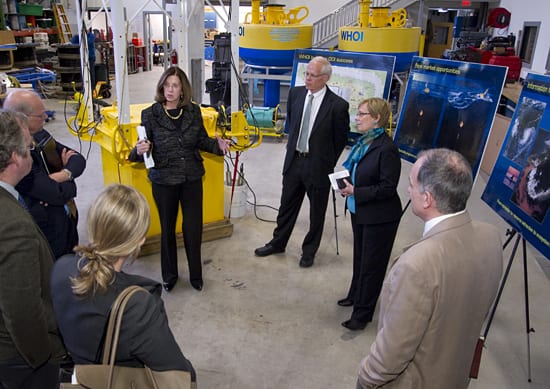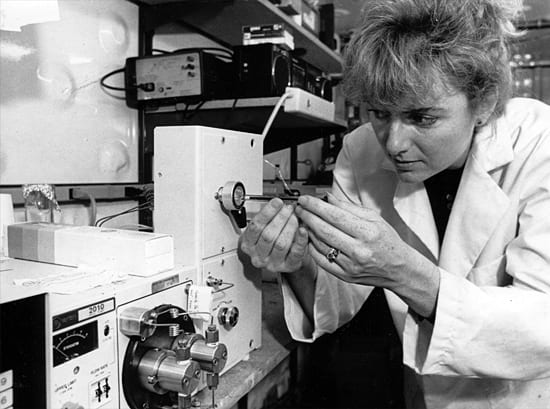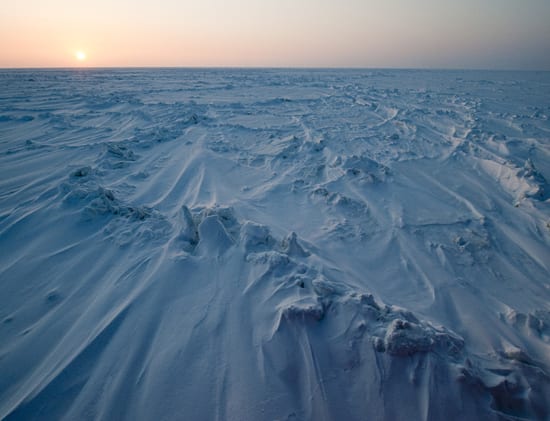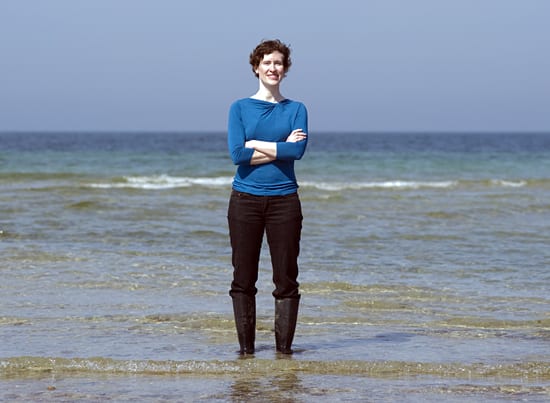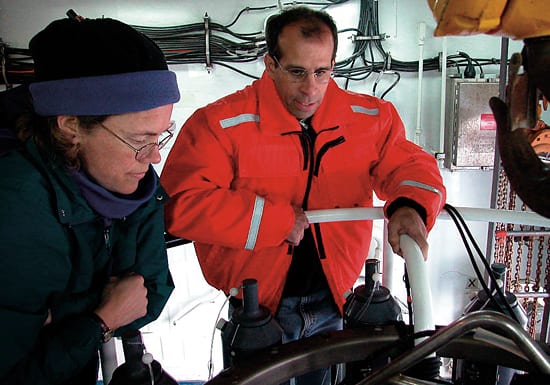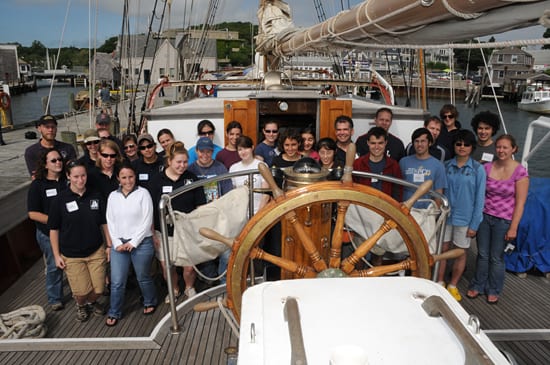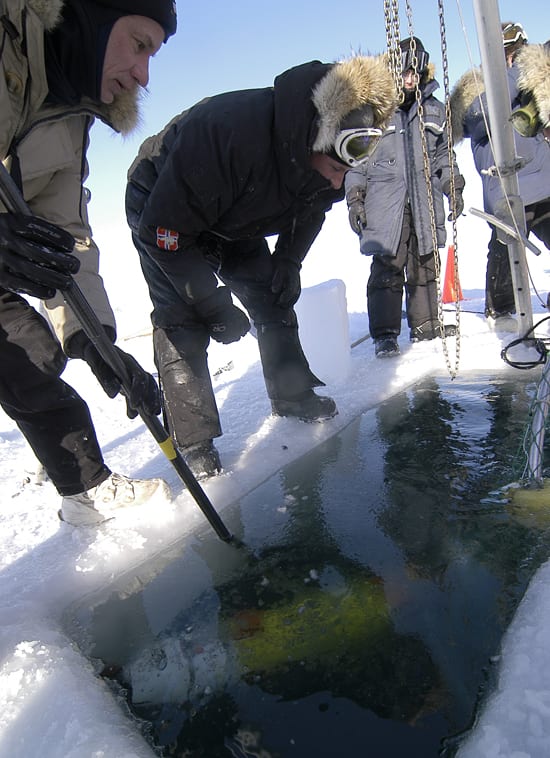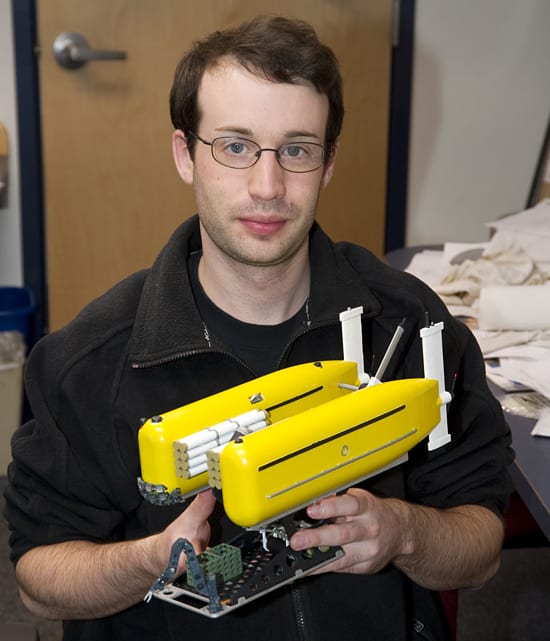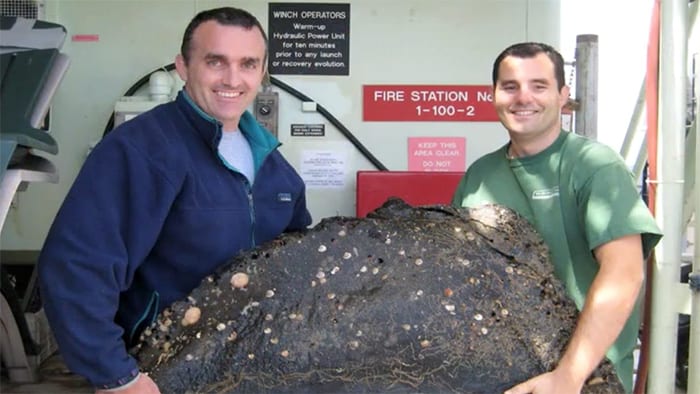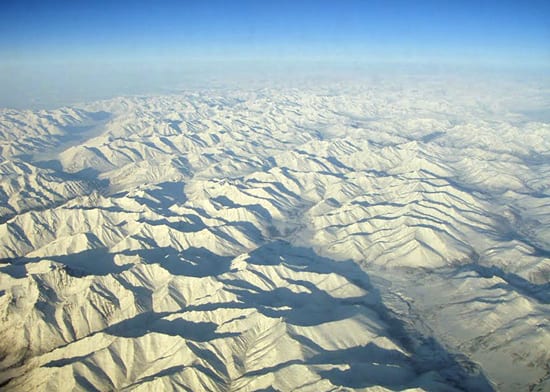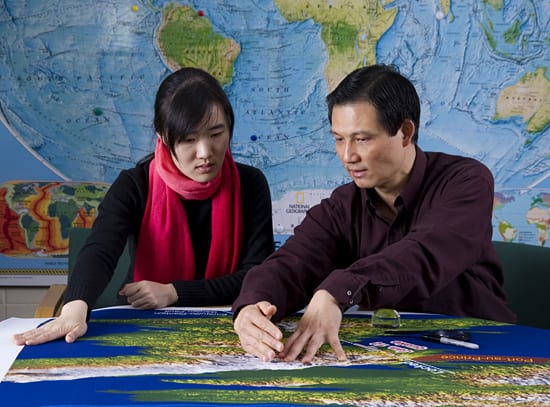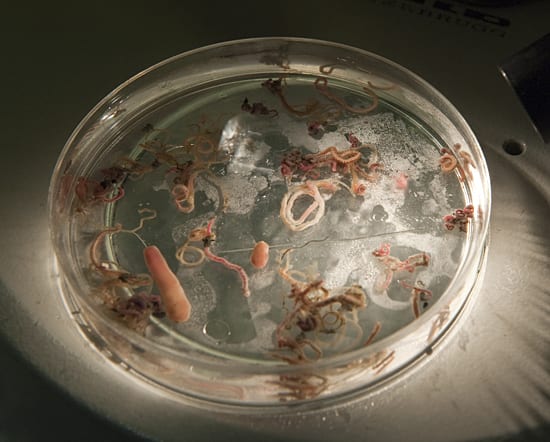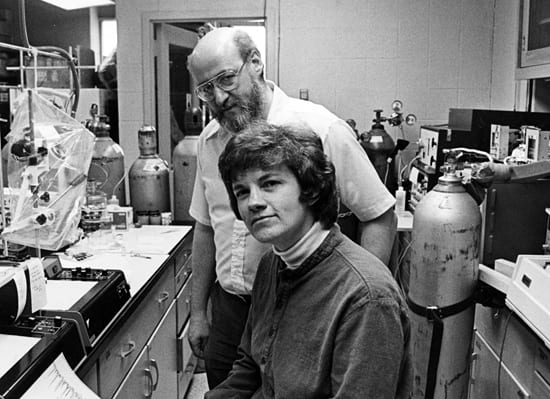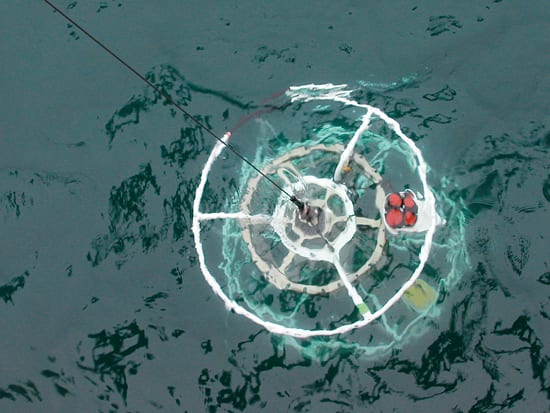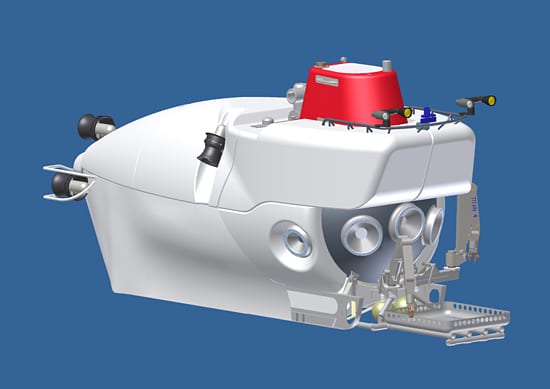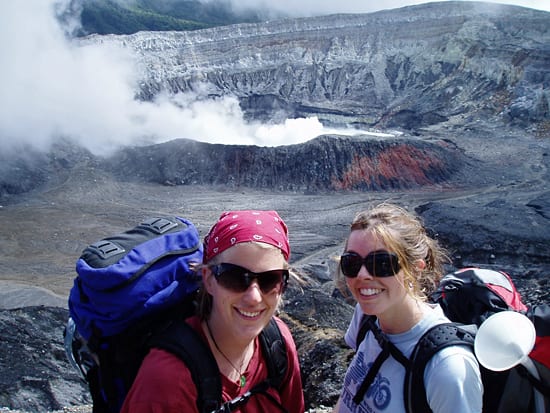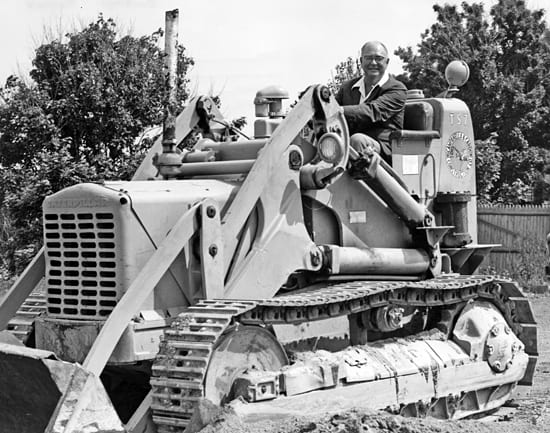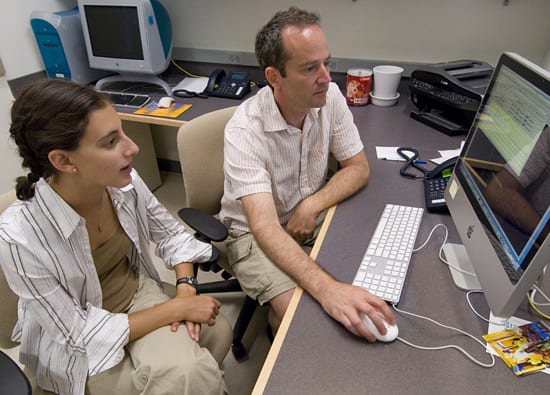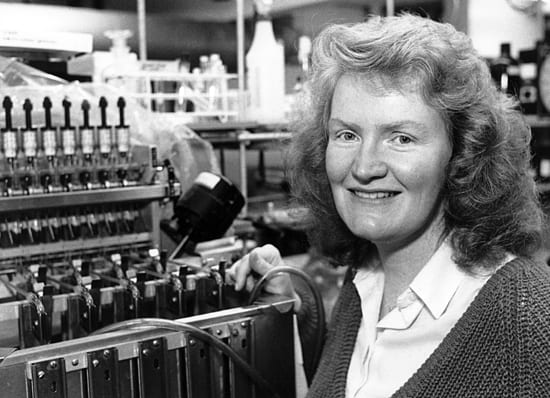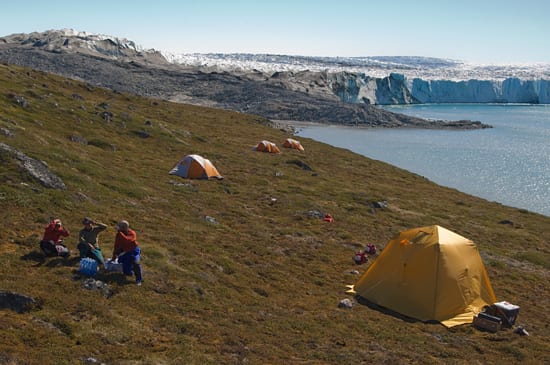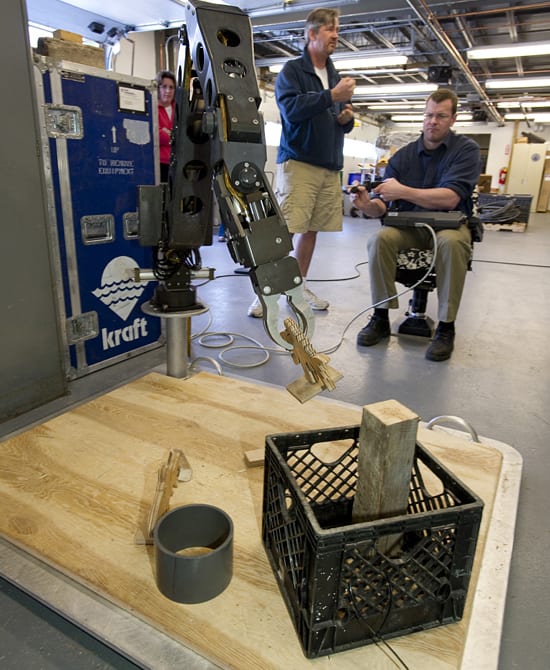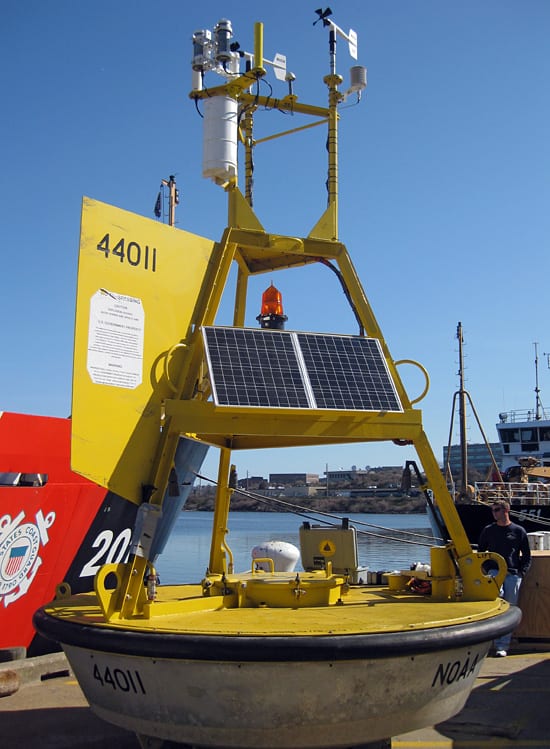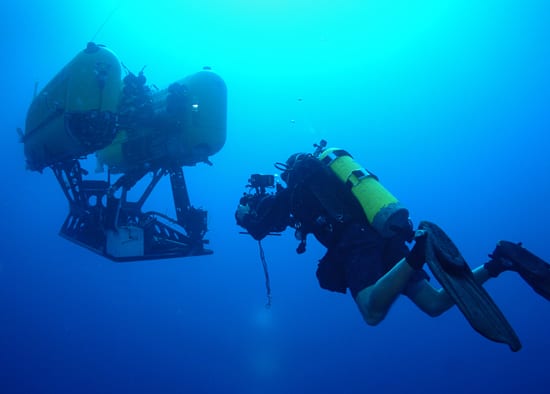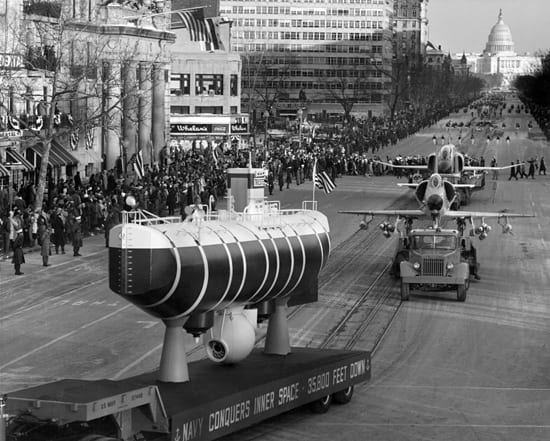Multimedia Items
Mass. Senate President Murray visits WHOI
Massachusetts Senate President Therese Murray (center) recently visited WHOI’s Rinehart Coastal Research Laboratory and heard about work supported by the Commonwealth of Massachussetts, through the John Adams Innovation Institute for…
Read MoreClams, bacteria, and chemicals
In the late 1980s, Noellette Conway Schempf, Joint Program graduate and current WHOI Corporation Member, used a chromatograph to analyze amino acids from shallow-water clams (Solemya velum) that harbor symbiotic…
Read MoreUnder pressure
Pressure ridges form when ice floes break up and are pressed back together, similar to the way that mountain ranges form when two continents bump together. These ridges are located…
Read MoreChanging chemistry
Intensive burning of fossil fuels and deforestation over the last two centuries have increased carbon dioxide (CO2) levels in the atmosphere by almost 40 percent. The oceans absorb about one-third…
Read MoreMonitoring the Arctic Ocean
WHOI oceanographer Bob Pickart and colleagues have been studying water movement across the Arctic Shelf into the Arctic Ocean basin, part of a multi-year project to learn more about this…
Read MoreDay of departure
A group of graduate students in the MIT/WHOI Joint Program get ready to set sail on the (SSV) Corwith Cramer for the 2009 Jake Peirson Summer Cruise. Each year students…
Read MoreIce fishing for an AUV
Al Plueddemann and Kris Newhall recover the autonomous underwater vehicle (AUV) REMUS 100 from an ice hole in Barrow, Alaska. The WHOI research team, led by Plueddemann and Amy Kukulya,…
Read MoreNereus in miniature
Casey Machado, of the Applied Ocean Physics & Engineering department, holds a model of the Hybrid Remotely Operated Vehicle Nereus. The model —a 1/14th scale replica of the deep-diving vehicle—…
Read MoreAsphalt Volcanoes on the Seafloor
By Cherie Winner, Joel Greenberg, Lonny Lippsett, Tim Silva :: Originally published online April 25, 2010
Read MoreTesting the icy waters
En-route to Barrow, Alaska, the northernmost city in the United States, researchers from WHOI pass over the remote, rugged terrain of the Arctic Circle. The WHOI research team, led by…
Read MoreKeeping a close eye on Haiti
WHOI geophysics guest student Tingting Wang and senior scientist Jian Lin (right) study Haiti earthquake data on charts. Lin has studied Haiti and other tectonic areas of the Caribbean and…
Read MoreFrom walruses to worms
The Bering Sea is a cold place, but it’s home to animals from walruses to worms. A dish of polychaete worms and one mollusk (the light pink loop in the…
Read MoreChemist Jean Whelan
Jean Whelan, Oceanographer Emeritis in the Marine Chemistry & Geochemistry department, remembers building this analytical equipment as a technician in chemist John Hunt’s lab, about 1980. “A new technique had…
Read MoreSteady rosette
Putting scientific equipment into Arctic waters —such as this conductivity-temperature-depth (CTD) rosette — requires an intricate balance of motion and timing. The shipboard CTD is made up of a set…
Read MoreThe future Alvin
A conceptual illustration of the next-generation research submersible: The WHOI-operated research submersible Alvin is a workhorse of deep sea science and exploration. Built in 1964, Alvin has made more than…
Read MoreEarth, the original recycling system
Post-doctoral Fellow Nicole Keller and associate scientist Alison Shaw, both of the Department of Geology and Geophysics at WHOI, pause during their hike to the Poas volcano in Costa Rica…
Read MoreThe Ketchum Award: coastal science, leadership, and society
Bostwick (“Buck”) Ketchum (1912-1982) served WHOI for more than forty years, studying topics from ocean physics to biology, but focused much of his attention on the coastal zone and human…
Read MoreForms of communication
As a 2009 WHOI Summer Student Fellow, Rose Kantor, (Carleton College) worked with adviser, marine chemist Tracy Mincer to study bacteria that communicate chemically, through a process called quorum sensing.…
Read MoreJudy McDowell: benchmarks in research and education
WHOI biologist Judith McDowell measures respiration of lobster larvae in her lab in about 1986. Since the 1970s she has done landmark research on lobster biology and how contaminants affect…
Read MoreRemote camp
In starkly beautiful surroundings, MIT-WHOI joint program students Maya Bhatia (center) and Alison Criscitiello (left), along with Matthew Evans (a scientist at Wheaton College) camped on the Greenland coast for…
Read MoreArmed for science?
Tito Collasius (standing), of the Applied Ocean Physics & Engineering Department, gives Matt Rigney pointers on how to operate the HROV Nereus manipulator arm during a one-day workshop for local…
Read MoreUpgraded buoys
A partnership between the WHOI Upper Ocean Processes Group, the Commonwealth of Massachusetts, and NOAA’s National Data Buoy Center (NDBC) is aimed at augmenting four weather buoys with instruments to…
Read MoreInto the deepest blue
A diver films the deep-sea explorer Nereus from the water during its second expedition in 2009 to investigate hydrothermal vents along Earth’s deepest mid-ocean ridge in the Cayman Trough. On…
Read MoreOn a roll
On January 20, 1961, in the midst of the Cold War, the bathyscaphe Trieste rolls down Pennsylvania Avenue in the Inauguration Day parade in Washington, D.C. The float celebrated the…
Read More
